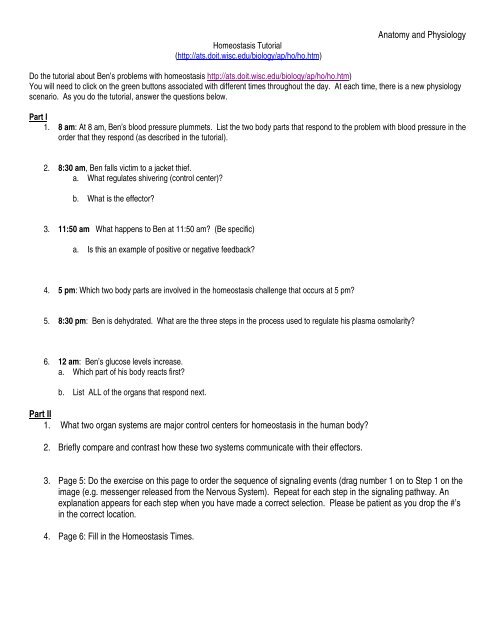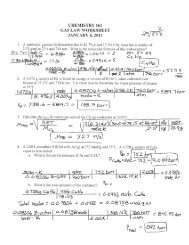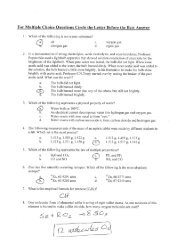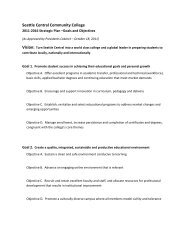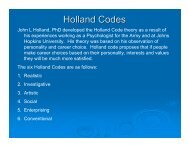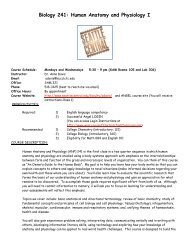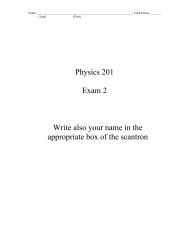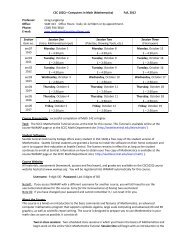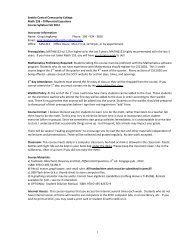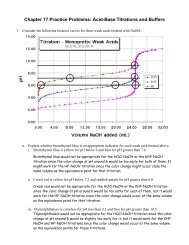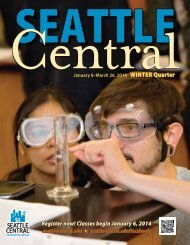Ben's Bad Day Worksheet - Seattle Central Community College
Ben's Bad Day Worksheet - Seattle Central Community College
Ben's Bad Day Worksheet - Seattle Central Community College
Create successful ePaper yourself
Turn your PDF publications into a flip-book with our unique Google optimized e-Paper software.
Homeostasis Tutorial<br />
(http://ats.doit.wisc.edu/biology/ap/ho/ho.htm)<br />
Anatomy and Physiology<br />
Do the tutorial about Ben’s problems with homeostasis http://ats.doit.wisc.edu/biology/ap/ho/ho.htm)<br />
You will need to click on the green buttons associated with different times throughout the day. At each time, there is a new physiology<br />
scenario. As you do the tutorial, answer the questions below.<br />
Part I<br />
1. 8 am: At 8 am, Ben’s blood pressure plummets. List the two body parts that respond to the problem with blood pressure in the<br />
order that they respond (as described in the tutorial).<br />
2. 8:30 am, Ben falls victim to a jacket thief.<br />
a. What regulates shivering (control center)?<br />
b. What is the effector?<br />
3. 11:50 am What happens to Ben at 11:50 am? (Be specific)<br />
a. Is this an example of positive or negative feedback?<br />
4. 5 pm: Which two body parts are involved in the homeostasis challenge that occurs at 5 pm?<br />
5. 8:30 pm: Ben is dehydrated. What are the three steps in the process used to regulate his plasma osmolarity?<br />
6. 12 am: Ben’s glucose levels increase.<br />
a. Which part of his body reacts first?<br />
b. List ALL of the organs that respond next.<br />
Part II<br />
1. What two organ systems are major control centers for homeostasis in the human body?<br />
2. Briefly compare and contrast how these two systems communicate with their effectors.<br />
3. Page 5: Do the exercise on this page to order the sequence of signaling events (drag number 1 on to Step 1 on the<br />
image (e.g. messenger released from the Nervous System). Repeat for each step in the signaling pathway. An<br />
explanation appears for each step when you have made a correct selection. Please be patient as you drop the #’s<br />
in the correct location.<br />
4. Page 6: Fill in the Homeostasis Times.
Part III<br />
Anatomy and Physiology<br />
1. Draw a figure showing the roles of glucagon and insulin in regulating blood glucose levels.<br />
2. Use the figure below to explain glucose regulation. Identify 1) set point mg/dl, 2) operating range, 3) regulated<br />
variable, action of insulin on blood glucose levels, action of glucagon on blood glucose levels (see page 5 for help).<br />
Label where the subject ate a high sugar meal. Label where the subject was fasted (in between meals). Explain<br />
your reasoning.<br />
Blood glucose<br />
[90 - 100 mg/dl]<br />
Time<br />
3. Use the Internet to determine the 3 countries in the world have the highest incidence of diabetes. Write these<br />
countries down. A good place to start is the World Health Organization. (http://www.who.int/en/)


